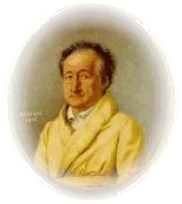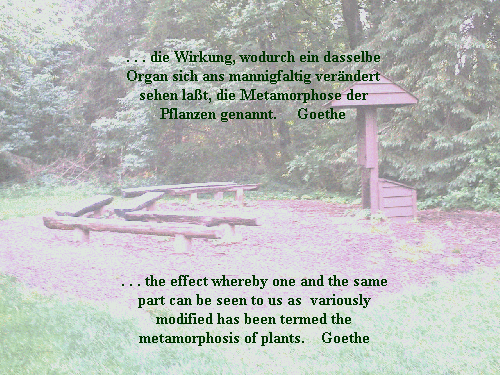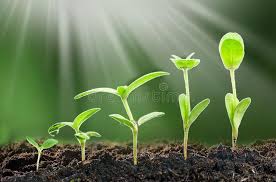
METAMORPHOSE DER PFLANZEN

METAMORPHOSE DER PFLANZEN
THE METAMORPHOSIS OF PLANTS
[Der Versuch die Metamorphose der Pflanzen zu Erklären]
[The Attempt to Explain the Metamorphosis of the Plants]
Von Goethe
By Goethe
As translated by Marilynn Stark

A sprout — a sprout whose movement characteristics are born of the ability to transmute its parts morphologically since it belongs to our neighboring kingdom, the plant kingdom. A plant can only grow. Through photosynthesis plants turn the energy of the sun into substance magically, or so it may seem to us. However, the sheer transmutational plasticity of form of the parts of plants as they grow may be distantly regarded as akin to how animals move most typically, using external parts such as limbs of a constant structure; and using such analogy of movement between the plant and animal kingdoms admits to an even greater magic in such as a radical act of the transmutation of a part. The luminary Goethe unraveled the event of the characteristic of plants to undergo morphological changes as they grow, and this he termed the metamorphosis of plants. Hereunder, you may read his very words and the translation that accompanies his work.
Marilynn Stark


The Translator



Kapitelübersicht
Summary of Sections
(See individual headings for translations of their meanings)
Einleitung
I. Von den Samenblättern
II. Ausbildung der Stengelblätter von Knoten zu Knoten
III. Übergang zum Blütenstande
IV. Bildung des Kelches
V. Bildung der Krone
VI. Bildung der Staubwerkzeuge
VII. Nektarien
VIII. Noch einiges von den Staubwerkzeugen
IX. Bildung des Griffels
X. Von den Früchten
XI. Von den unmittelbaren Hüllen des Samens
XII. Rückblick und Übergang
XII. Von den Augen und ihrer Entwicklung
XIV. Bildung der Zusammengesetzten Blüten und Fruchtstände
XV. Durchgewachsene Rose
XVI. Durchgewachsene Nelke
XVII. Linnés Theorie von der Antizipation
XVIII. Wiederholung
Einleitung
Introduction
1. Ein jeder, der das Wachstum der Pflanzen nur einigermaßen beobachtet, wird leicht bemerken, daß gewisse äußere Teile derselben sich manchmal verwandeln und in die Gestalt der nächstliegenden Teile bald ganz, bald mehr oder weniger übergehen.
Anyone who only somewhat observes the growth of plants will easily notice that certain outer parts sometimes transmute themselves, soon more or less and soon totally, to merge into the forms of their most contiguous components.
2. So verändert sich, zum Beispiel, meistens die einfache Blume dann in eine gefüllte, wenn sich, anstatt der Staubfäden und Staubbeutel, Blumenblätter entwickeln, die entweder an Gestalt und Farbe vollkommen den übrigen Blättern der Krone gleich sind, oder noch sichtbare Zeichen ihres Ursprungs an sich tragen.
2. In the majority of cases the elementary flower is then itself so modified, for example, into full bloom when petals develop in the place of the stamen (thread) and anther; these are either in conformation and color completely even with the rest of the foliage of the crown or else bear observable characters of their source intrinsically.
3. Wenn wir nun bemerken, daß es auf diese Weise der Pflanze möglich ist einen Schritt rückwärts zu tun und die Ordnung des Wachstums umzukehren, so werden wir auf den regelmäßigen Weg der Natur desto aufmerksamer gemacht, und wir lernen die Gesetze der Umwandlung kennen, nach welchen sie einen Teil durch den andern hervorbringt und die verschiedensten Gestalten durch Modifikation eines einzigen Organs darstellt.
3. When we now observe that it thus is likely for a plant to make a regressive move and to reverse the order of growth, we are made so much the better attentive unto the regular way of nature, and we get to know the law of conversion according to which it induces a particle through the others and displays the most different conformations of a sole part through modification.
4. Die geheime Verwandtschaft der verschiedenen äußern Pflanzenteile, als der Blätter, des Kelchs, der Krone, der Staubfäden, welche sich nacheinander und gleichsam auseinander entwickeln, ist von den Forschern im allgemeinen längst erkannt, ja auch besonders bearbeitet worden, und man hat die Wirkung, wodurch ein und dasselbe Organ sich uns mannigfaltig verändert sehen läßt, die Metamorphose der Pflanzen genannt.
4. The secret relationship of the different plant components has been in general long ago recognized by the scientist, indeed, has been also notably treated. These components develop successively and seemingly apart and express as the leaves, the calyx, the crown and the stamen. The effect whereby one and the same part can be seen to us as variously modified has been termed the metamorphosis of plants. [Revised on October 20, 2007]
5. Es zeigt sich uns diese Metamorphose auf dreierlei Art: regelmäßig, unregelmäßig und zufällig.
5. This metamorphosis appears to us in three kinds of forms: regular, irregular and random. [Revised on October 22, 2007]
